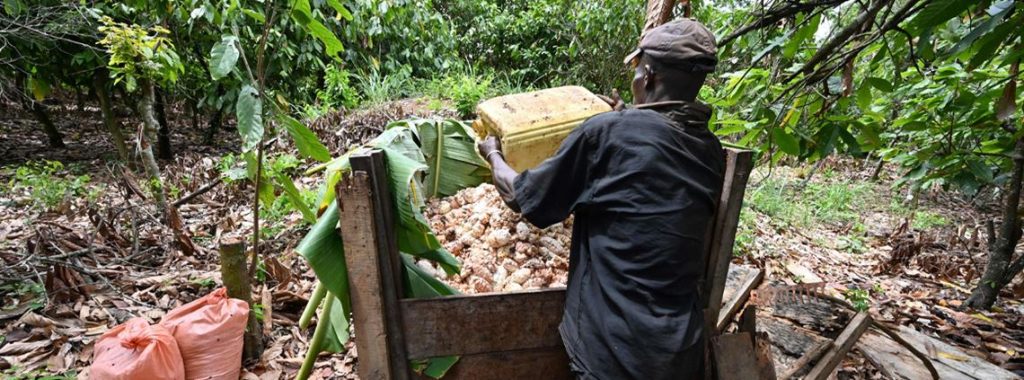Cocoa supply chains having ‘huge’ environmental impact in Africa

Cocoa production may have caused much more deforestation than was previously assumed in protected areas of Côte d’Ivoire and Ghana, according to a new report.
An international team of researchers, including two scientists from the University of Cambridge in the UK, found that cocoa production may be associated with up to 37% of forest loss in protected areas.
Their report was created by generating a new high-resolution map of cocoa growing areas in the two countries – which produce around 70% of the world’s cocoa.
According to the researchers, the lack of an accurate, high-resolution map of cocoa-growing areas has made it difficult to establish how much deforestation has occurred as a result of cocoa farming.
Using AI neural networks to find patterns in data, the team found that the land area devoted to cocoa covers more than 7m hectares of plantations across both countries.
“The result is far greater than official figures—up to 40% higher in Ghana’s case,” the researchers said.
“Given where we found cocoa growing, and where forest loss has been observed, we estimate more than 37% of deforestation in protected areas can be linked to cocoa production in Côte d’Ivoire. For Ghana, the figure is 13%.”
Field investigators were sent to confirm the satellite research findings – visiting more than 2,000 locations.
“What’s more, much of the cocoa plantation area exists in vast areas of what was once native forest. And more than 1.5m hectares of land under cocoa production is located in protected areas,” added the researchers.
Much of the forest that has been destroyed – forming part of the Upper Guinean forests of West Africa – would have been classified as a “global biodiversity hotspot”.
This means they contained exceptional concentrations of plant and animal species found nowhere else on Earth.
Since 1950, Côte d’Ivoire has lost up to 90% of its forest cover and Ghana has lost 65%. Cocoa farming was primarily responsible, although mining and logging have also played a role in the loss of forest cover.
Researchers called on consumers to pay more for chocolate in order to ensure that the 2m mostly small-scale cocoa farmers earn more money from confectionary sales.

